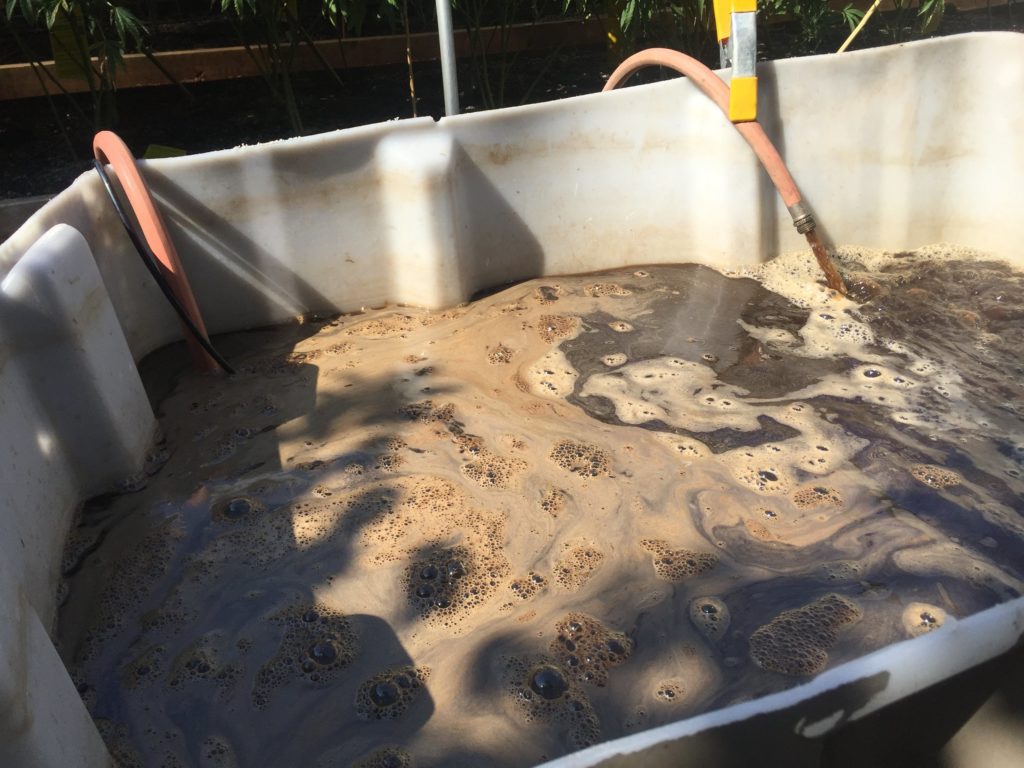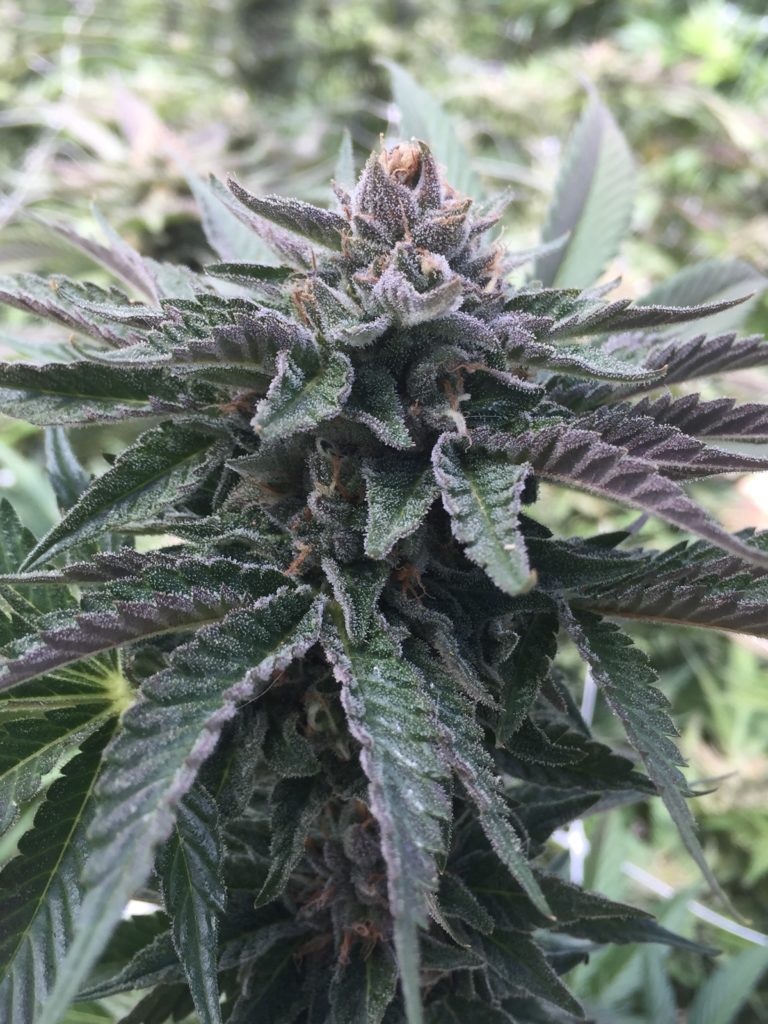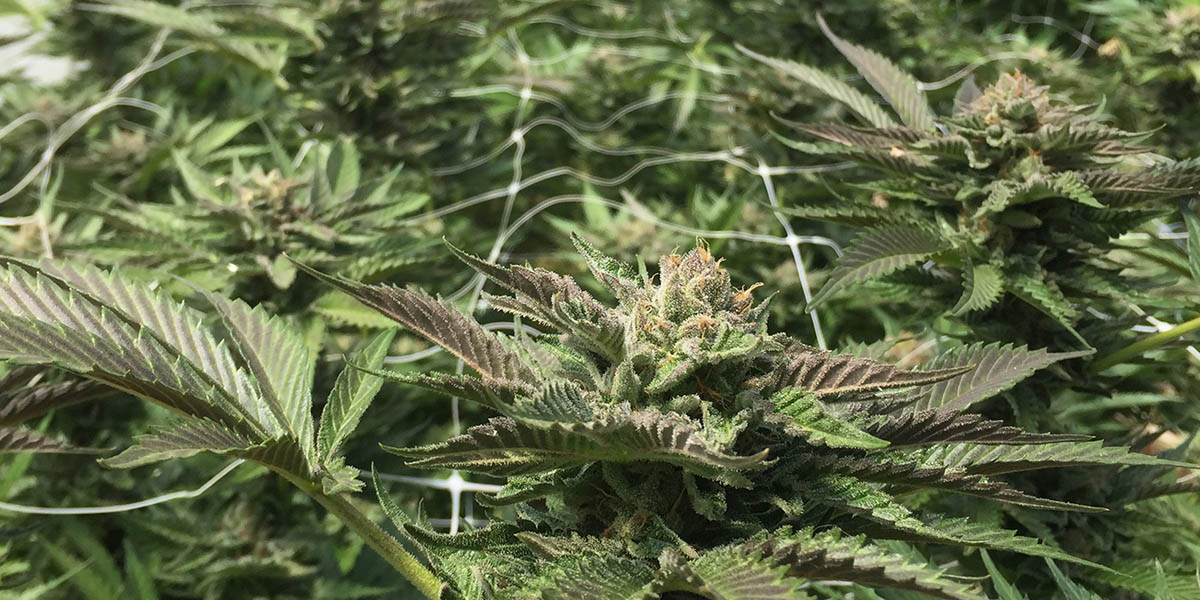Compost tea can be an effective strategy for balancing feeding schedules. But in the case of compost tea, more is not necessarily better. In fact, over application can actually cause significant soil imbalances. Many times, the problem of over-application of compost tea becomes compounded when the soil remains over-saturated for too long after the application of compost tea, especially if it is being used at every watering. If the microbes have a big boom cycle but then the soil is water logged, the bust cycle will lead to a much quicker anaerobic state, which can lead to a number of different problems.
There are many instances where compost tea is only applied 1x month to outdoor plants with excellent results. Just because you are seeing excellent results with compost tea, doesn’t mean that adding more will work even better.
Feeding Schedules for Rapid Growth
- Liquid Fertilizer
- Compost Tea
- Water
A very successful regime observed in Humboldt County involves transitioning between liquid fertilizers, compost teas and watering. So one would use their liquid fertilizer on the first watering, the second watering would be the compost tea and the third watering would be plain water. Depending on site specific conditions, you may want to repeat that schedule or mix and match in different patterns. Some growers dilute the tea and some apply it as full strength. Sometimes they mix it with liquid fertilizers. Some growers pre-amend their soils with organic fertilizers and then simply use compost tea periodically (~1x – 2x month) throughout the growing cycles.


Compost tea made with all liquid ingredients 

This compost tea was tank mixed with a few biostimulants just prior to watering. 

Cherry Zkittlez grown with compost tea
Whatever methods you decide to choose, know the backbone to any good compost tea is:
- Compost / Humus
- Worm Castings
All the additional ingredients you add will depend on your knowledge of the plants life-cycle and current soil biology. There are ways to brew grow teas, bloom teas, high bacterial teas, high protozoa teas and fungal teas. People use molasses, fish hydrolysate, frass, alfalfa, glacial rock, kelp, straw and many other ingredients, but the backbone always starts with a HIGH QUALITY compost or castings.
That’s the quick lowdown on compost tea feeding schedules, if you feel like you have something to add or would like to share your regimen, please utilize the comments below. Happy Brewing!!!
By: Russell Pace – President of the Cannabis Horticultural Association





I went to compost tea and COCO. I use kelp, fish, bloodmeal, bone meal and bat Guano. along with some natural mulch made from everything. then I like Liquid fertilizers from Bloom, including flush. they keep the PH great. twelve days before harvest I flush the fertilizers and salts out. also if you can afford a greenhouse do it. build a frame. use two sheets of plastic at least 6m thick. if you live along the Canadian boarder a big freeze can come in early September with huge winds. it’s so nice. put in a swamp cooler. because after 85 degrees they don’t grow. also it’s worth getting a Co2 machine. it comes from one burner to eight. you get pure C02 and it makes it cheaper. also get a small blower motor to in between the plastic to give you a foot of air insulation. discharge you can go with a charcoal filter to reduce the smell. I have an ozone machine also. then when you have that it makes it so easy. remember clean clean clean! hepa-filters on intake. I also use and make my own Colloidal Silver, then you run a charge through two sliver rods. when they start to flower spray the marked branches where you want female seeds, works great! happy highs!
Very interesting, thanks for your comments John!
Knowing when to brew which specific organic teas and feed plants’ roots and spray their leaves on a schedule throughout the growing process would be very helpful, as would omitting references to using combinations of chemical and organic methods, given that the introduction of chemical fertilizers to organically nourished plants could lead to imbalances and unwanted salt buildup in the grow medium. Also I believe that flushing should not be required for organic grows.
Tea Compound In Coco Coir Anybody?